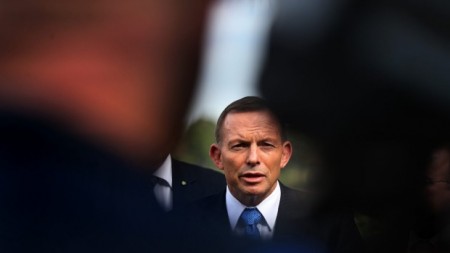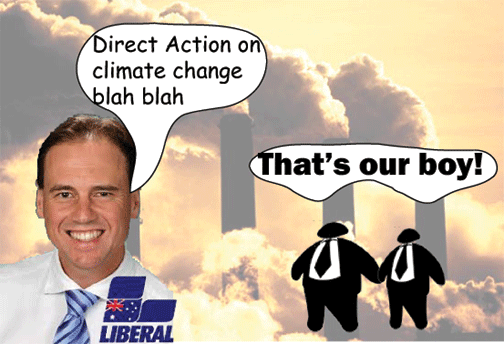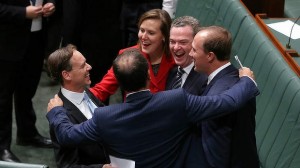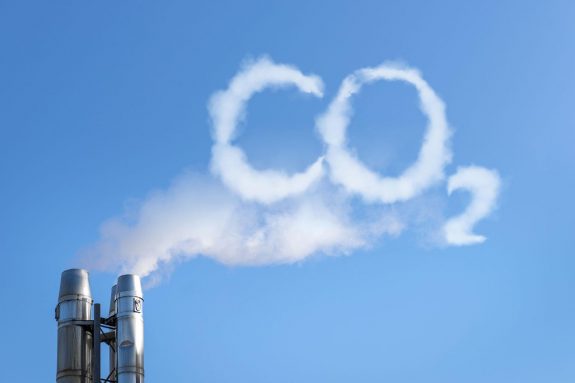The relevance of Tony Abbott

By Paul G. Dellit
Now That The Lunatic Is No Longer In Charge Of The Asylum . . .
That’s unfair. Tony Abbott neither is nor was a lunatic. In the view of this writer, he was, at least as far as his Prime Ministerial persona was concerned, a brawling, misogynistic, serial-lying, duplicitous, incompetent, inarticulate, graceless buffoon. And he sought to mask all of these character traits with slogans and repetitions of slogans, and repetitions of repetitions of slogans said with animus as if to imbue them with the gravity they lacked . . . but he was not a lunatic.
We could go on, well into the night, reciting the many failings of this man in the role of Prime Minister and in the role of sensitised human being – but it would avail us nothing. It is not often wise to quote Senator Eric Abetz – in fact it is frequently impossible to quote the good Senator accurately, given the number of extra syl-lie-bles he finds for each word – but he said it all, ruby cheeked and trembling of hand, when asked about his prospects of a Ministerial position post Abbott. “The king is dead . . .”, he said. He didn’t add, “bur-i-ed, and cre-may-ted”. He didn’t need to. Former Prime Minister Abbott is now relevant to the current political scene in Australia only insofar as he is the exemplar of how not to do it.
However, it seems that life’s reversals are not learning experiences for Anthony John Abbott. He has already broken a post-Prime Ministerial promise to go gently into the night. He was, as he would have it, the victim of external forces, not personal failings, just as was Peta, she said, victimised because her name wasn’t Peter, even though she was responsible for the LNP winning the 2013 election.
But the purpose if this article is not to indulge in necrocide. Nor is it, in Shakespearean terms, to bury Tony Abbott without praise. And here I must crave your indulgence. The purpose of this article is to praise our most recently deposed Prime Minister.
It is easy to consider that man as little more than political carrion, but he did render a service to us for which we must be eternally grateful. It was for the fact that he was true to himself. From beginning to end, he was a shining beacon for right wing extremists in Australia (and Canadia). He gave them the status of having one of their own occupying the highest political office in the land. He gave the timorous within their ranks the courage to openly express their inner voices. He gave them licence to propose the policies and schemes, hitherto concealed, by which they would seek to transform Australia. And he gave them the belief that he had within his power the means to pursue those ends on their behalf. In short, the praiseworthy service Tony Abbott rendered to Australia was to expose the agenda of our extreme right wing while at the same time unwittingly laying IEDs along the road to their ultimate defeat.
Some of you may remember my article in May of this year, ‘Australian Democracy at a Tipping Point‘ which argued that Prime Minister Abbott was setting about the abolition of the rule of law and, given his way, would replace it, step by step, with rule by unchallengeable Ministerial fiat. The ratio decidendi of Ministerial decisions and the evidence upon which they were based would be kept secret, with any disclosure without Ministerial permission punishable by law. This attempt by the Abbott Government has largely been stymied by the effects upon the Senate of the outcries of respected lawyers and large sections of the public. While the rump of this Abbott initiative remains in play, a preponderance of legal opinion has it that these remnants to the original bill, if passed, would be struck down by the High Court. We seem to be out of danger on this score for now.
However, there are many precedents for democratic governments being overthrown by right wing movements. Their first item of business after gaining power is to restructure government in ways that would fit comfortably alongside the challenges to democracy proposed in the original Abbott bill. Had circumstances been different, had those with ultimate power in Australia decided they wanted that bill passed into law, its passing would have set a precedent for other such laws to follow. A clever strategist could then have set about introducing small changes, none of which would seem so egregious as to warrant a revolution, but by accretion would, like boiling frogs by raising the water temperature slowly so that they become inured to change, kill our Westminster system of government.
Minister Dutton and others attempted to promote the original Abbott bill by assuring the public that the LNP would never abuse the power it gave them. Yet there is evidence that even without the power of that bill passed into law, the extreme right wing abuse what power they do have.
A recent FOI request revealed a case in point: A man of some power and influence within business and politics in Australia, Maurice Newman, used that power and influence to arrange for The Australian newspaper to launch an attack upon the Bureau of Meteorology (BoM). The willingly complicit Murdoch press manufactured evidence to claim that that the BoM had manipulated and falsified data to suit a left wing climate change conspiracy. With this campaign of misinformation successfully launched, Maurice Newman had provided the excuse for his close friend, Tony Abbott, to launch a Prime Ministerial foray into the data gathering and analysis functions of the BoM. The nature and tone of his intervention was manifestly designed to intimidate the BoM into toeing the Abbott/Newman climate change denial line – clear evidence of an attempt to smother science with extreme right wing ideology.
More importantly, the attempt to manipulate the work of the BoM demonstrated Prime Minister Abbott’s propensity for using the power of the Executive to covertly exert anti-democratic influence upon role of the Public Service to provide “frank and fearless advice”. How many other attempts, successful or otherwise, might he have made to pervert the fundamental principles upon which our system of democracy is based? We may never know, but, on balance, we don’t have to care. If there are further examples to be unearthed, they will be because, by his own actions, he has ensured that he will not be around to covertly carry them through. His interference with the BoM was undertaken before he had rendered the FOI legislation impotent. And all of his other assaults upon democracy in the prosecution of his extreme right wing agenda were committed before he had shored up his defences against the democratic backlash that was ultimately his undoing:
- The appointment of his benefactor, Dyson Heydon to run the TURC (This is not to say that a TURC was not justified, whatever Abbott’s motives for creating it, but Dyson Heydon’s appointment ensured that the partiality of the Commissioner and his commitment to causing as much mud as possible to stick to the ALP was never in doubt).
- The appointment Bronwyn Bishop (nee Setright) as a highly politicised Speaker.
- Reposing in his unelected Chief of Staff the extraordinary executive power to control the actions of elected representatives, including Ministers, culminating in the directions issued from her Office which resulted in Border Force officers roaming the streets of Melbourne with the stated intention of randomly stopping and questioning members of the public under pain of arrest.
- And of course, the law, passed with the supine collaboration of the ALP, that threatens whistleblowers with imprisonment for following their own professional standards and obligations – a law that allows the most egregious abuses of the human rights of people under the Government’s control without any legal means of exposure.
So I for one am grateful to Tony Abbott for dragging the extreme right agenda into full public view and epitomising, Pauline Hanson-like, the kind of irrational, ideologically driven, callous people who would prosecute it if they had the chance.












